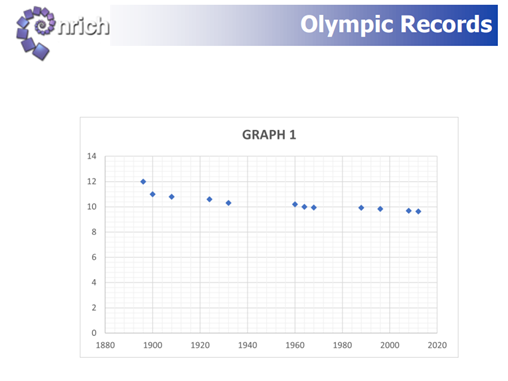When chatting with primary teachers about the challenges they’re facing teaching maths, three key issues which tend to dominate our conversations are engaging their students: managing the differing attainment levels in their classrooms and finding the time to cover everything during the busy school day (I might also add the need to support teachers to maintain their passion for teaching at a time when they’re inundated with national initiatives and the seemingly never-ending demands of paperwork). I found that adopting a cross-curricular approach helped me to address these issues in my own classroom (including maintaining my love for teaching). In this article I’ll explore some possible ways to bring a cross-curricular approach into the primary classroom, including a selection of some of my favourite some useful activities.
Engaging students through a cross-curricular approach
Primary classrooms are packed with curious young people who have a huge variety of interests, and we can use those skills to help engage reluctant learners with mathematics. Whether they long to play football, paint a picture or create a model, there’s not only an opportunity to make a meaningful link to their maths curriculum, but also an opportunity to celebrate their life outside school. One of my favourite activities for bringing sporting knowledge into primary maths lessons is the Olympic Records challenge (Figure 1). This task, which works well with small groups, challenges young learners match athletic events and their graphs, and learners quickly realise that having a sporty person in their group is a real asset. Try it yourself! See if you can figure out which Olympic event is featured in the unlabelled graph in Figure 1.

Figure 1: A screenshot of one of ten graphs featured in the Olympic Records challenge.
Image reproduced with permission of NRICH, copyright University of Cambridge.
As you may have realised, the graph in Figure 1 presents the winning times in the men’s 100m Olympic finals. Although interpreting graphical data appears in the primary maths curriculum, learners who are also keen athletes might use their knowledge about Usain Bolt and his amazing sprinting times to help their group to correctly label their graph (and enable them to apply their athletic knowledge to a new situation). Cross-curricular activities such as Olympic Records can help learners value the skills of others, engage reluctant learners, and promote more effective team-working in our primary classrooms. There are ten different graphs for classes to match to their correct athletic activities, and accompanying Student Solutions so that classes can compare their own reasoning with the answers shared by other classes.
Managing different attainment levels
Trying to find engaging cross-curricular maths activities which every primary-aged child can get started on, but which offer a level of challenge for those who need it, can be a real challenge. One useful approach is choosing ‘low threshold, high ceiling’ (LTHC) tasks which allow everyone to get started, and everyone to get stuck! At NRICH, the team collated its wealth of LTHC tasks into searchable cross-curricular contexts, from art and astronomy to technology and textiles (Figure 2). This means that teachers are just a few clicks away from a freely available selection of LTHC cross-curricular resources for their classes.

Figure 2: Screenshot of NRICH’s searchable cross-curricular contexts.
Saving time through a cross-curricular approach
Time is always tight in busy primary classrooms, and cross-curricular working can help make more time available but spending Sunday evenings trying to make meaningful links between Monday’s maths lesson and the other timetabled subjects the next day is never easy. One helpful approach towards managing cross-curricular planning is developing meaningful links at the medium-term planning stage. Let’s consider measures. If teaching estimating and measuring skills is planned for late spring or early summer, then there’s plenty of opportunities to reinforce those skills during outdoor PE sessions in readiness for summer sports days. Activities such as NRICH’s Can You Do It To? bring together PE and maths in a meaningful way, and they also offer a fun way to assess knowledge and skills taught earlier in the term (Figure 3).

Figure 1: Screenshot of the Can You Do It To? challenge.
Image reproduced with permission of NRICH, copyright University of Cambridge.
Summary
So far, we’ve explored three key benefits that adopting a cross curricular approach can make to teaching and learning in the primary classroom. However, there’s one more benefit which I think is more important than the others; it’s about the satisfaction we derive as teachers when we see our classes enjoying their learning, making connections to real-life and beginning to understand the importance of maths. Cross-curricular maths can be great fun for teachers as well as their classes. Give it a go next term and see what difference it makes to the teaching and learning of maths in your classroom.

Article written by Dr Ems Lord
Director of NRICH, the University of Cambridge’s Award-winning Outreach Mathematics Programme, past president of The Mathematical Association, and Ambassador for Maths Week England. Dr. Ems Lord also recently contributed to the TTS Talking Little Lockdowners Q&A series.



